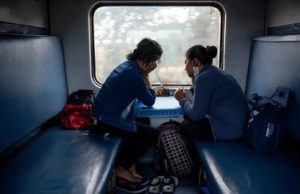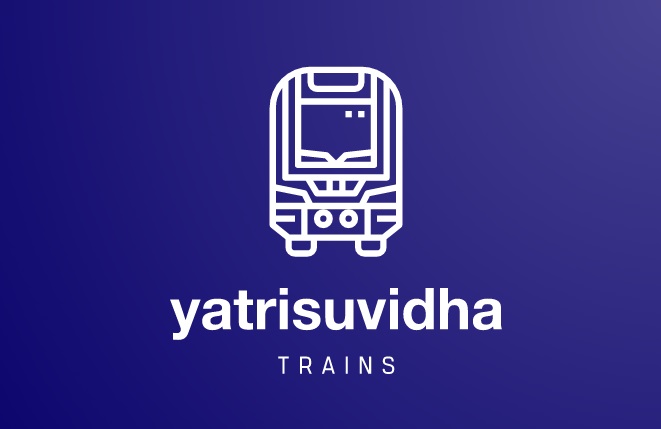
Indian Railways, one of the largest rail networks in the world, serves millions of passengers daily with a range of trains catering to diverse needs. Its affordable pricing and extensive reach make it the backbone of transportation in India. Train fares in India are determined based on multiple factors, including the class of travel, train type, distance, dynamic pricing, and demand
- Factors Influencing Train Fares
- Type of Train
Passenger Trains:
Fares are minimal, aimed at affordability for rural and suburban areas.
Example: General fare for a short 50 km journey can be as low as ₹20.
Express and Superfast Trains:
Include slightly higher fares than passenger trains due to faster travel times
Superfast charges (₹15-₹75) are added to regular fares.
Premium Trains:
Rajdhani Express: High fares include meals and bedding.
Duronto Express: Offers faster travel without intermediate stops, with fares slightly less than Rajdhani.
Vande Bharat Express: Premium pricing due to speed, comfort, and advanced amenities.
Luxury Trains:
Palace on Wheels, Deccan Odyssey, and Maharajas’ Express charge exorbitant fares, often starting at ₹2 lakh per person for a luxury experience.
- Class of Travel
Indian Railways offers a variety of travel classes:
General (Unreserved): Cheapest class, with minimal facilities.
Sleeper Class (SL): Economical option for long-distance travel.
Second Sitting (2S): Basic seating option for short and medium distances.
Air-Conditioned Classes:
AC 3 Tier (3A): Affordable air-conditioned travel.
AC Chair Car (CC): For daytime journeys, with comfortable seats.
AC 2 Tier (2A): Fewer passengers per cabin, offering more privacy.
AC First Class (1A): Premium experience with private cabins.
- Distance
Fares increase proportionally with the distance traveled. For instance:
A sleeper class ticket for 500 km costs approximately ₹300.
The same distance in AC 3 Tier might cost ₹750.
- Dynamic Pricing
Tatkal Scheme: Charges a premium for last-minute bookings.
Sleeper Class: ₹100-₹200 extra.
AC Classes: ₹125-₹400 extra.
Premium Trains: Use dynamic fare systems, where ticket prices increase as demand rises.
- Concessions
Indian Railways offers fare concessions to:
Senior citizens: 40% for men, 50% for women.
Students, differently-abled individuals, and military personnel also benefit from discounts.
- Fare Breakdown for Popular Train Categories
- Vande Bharat Express
Known for its speed and comfort, Vande Bharat fares include catering charges:
Delhi to Varanasi (approx. 758 km):
Executive Class: ₹3,300.
Chair Car: ₹1,800.
- Rajdhani Express
Fares include meals:
Mumbai to Delhi (approx. 1,387 km):
AC 1st Class: ₹5,000.
AC 2 Tier: ₹3,000.
AC 3 Tier: ₹2,200.
- Shatabdi Express
Designed for daytime travel, Shatabdi fares include meals and amenities:
Delhi to Amritsar (approx. 448 km):
Executive Class: ₹1,450.
Chair Car: ₹850.
- Mail and Express Trains
These cater to middle-income travelers:
Delhi to Kolkata (approx. 1,531 km):
Sleeper Class: ₹600.
AC 3 Tier: ₹1,550.
- Suburban Trains
Used for daily commutes, suburban train fares are minimal:
Mumbai Local: Starting fare is ₹5, and monthly passes cost around ₹150-₹1,500 depending on the class and distance.
- Dynamic Fare Systems
Tatkal Ticket Pricing
Introduced for last-minute travelers, Tatkal tickets cost higher:
Sleeper Class: Base fare + Tatkal charges (₹100-₹200).
AC Classes: Base fare + Tatkal charges (₹125-₹400).
Premium Tatkal Scheme
Available on select routes:
Charges are dynamically priced, often 30-50% higher than regular Tatkal.
Flexi-Fare System
Implemented in premium trains like Rajdhani, Duronto, and Shatabdi:
Prices increase by 10% with every 10% of tickets sold, capped at 1.5 times the base fare.
- Concessions and Discounts
Indian Railways supports social causes by offering concessions:
Senior Citizens:
Men (60+ years): 40% discount.
Women (58+ years): 50% discount.
Students: 50% for general and sleeper classes.
Physically Challenged: 25%-75% discounts depending on disability type.
Military Personnel: 50%-75% concession on various classes.
- Booking Platforms and Payment
Online:
IRCTC Website: Official platform for booking tickets.
E-wallets and UPI for seamless payment.
Offline:
Railway counters.
Travel agents.
- Key Tips to Save on Train Fares
Advance Booking: Secure tickets early to avoid dynamic pricing.
Rail Passes:
Indrail Pass: Unlimited travel across India for tourists.
Season Tickets: Economical for daily commuters.
- Future Trends in Train Fare Pricing
Privatization and Competition:
With private operators entering, premium services might see competitive pricing.
Smart Pricing Models:
Based on demand analytics, offering dynamic discounts during off-peak seasons.
Train fares in India cater to a wide spectrum of passengers, from daily commuters seeking affordability to tourists desiring luxury. By understanding the fare structures, concessions, and dynamic pricing mechanisms, travelers can make informed choices, ensuring both savings and comfort. With upcoming advancements and new train services like Vande Metro, Indian Railways continues to evolve, providing cost-effective yet world-class transportation.

Leave a Reply